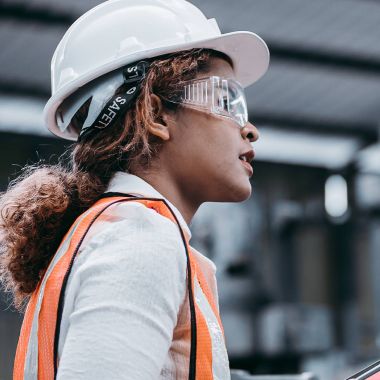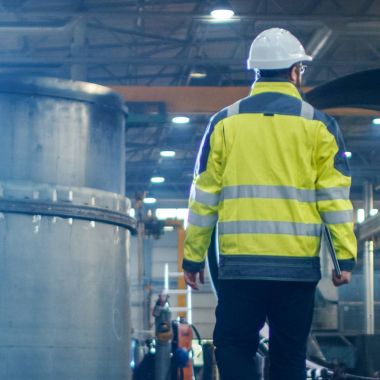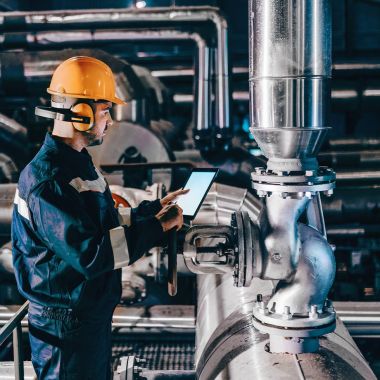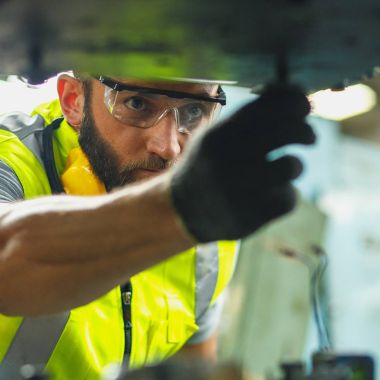Merry Christmas! We’ll be closing on Christmas Eve and returning on 5th January. 24/7 support is available on 1300 599 540.
A lone worker carries out their job responsibilities generally without supervision. They can be anyone from contractors to self-employed people to employees, operating from home or in fixed establishments where only a single person works on the premises. These include workers in small workshops, petrol stations, and kiosks.
People working in factories, warehouses, leisure centres, and training or research establishments can also be classified as lone workers as long as they operate separately from their colleagues. Other types of lone workers include cleaners, security, maintenance and repair staff, and special production personnel who work outside normal hours.
Construction workers, plant installers, electrical repairers, lift repairers, vehicle recovery specialists, and similar workers are also considered lone workers as they work away from their fixed base.



Lone workers are not under direct supervision, making it difficult to provide assistance in certain situations. Therefore, organisations must have appropriate safety measures to showcase their commitment to employees’ well-being and welfare.
Mitigating risk is much easier with a complete plan in place, allowing the organisation to address risks and implement safety protocols. Additionally, lone workers themselves will know what to do if they encounter accidents, health emergencies, or other unforeseen circumstances.
Finally, lone worker safety is crucial to remain legally compliant. Employers have a duty of care, which should be met to avoid potential penalties and liabilities.
Yes, and in fact, technology plays a critical role in boosting lone worker safety. Different lone worker solutions are available, including GPS tracking that enables real-time lone worker tracking of lone workers’ locations and automated check-ins, providing regular prompts and updates to ensure worker health or condition.
Real-time lone worker monitoring systems are also available to observe a person’s activity and well-being continuously. Organisations use these technological solutions to determine whether an individual is working like normal, is currently in a stressful situation, or has stopped moving.
Employers can also use data collected from safety technologies to identify problem areas and proactively improve their safety measures. Technology allows for two-way communication and even instant alerts should an emergency arise.



Yes, it is the legal and moral responsibility of employers to ensure the safety and well-being of all employees, including those working in solitary environments.
Although specific requirements and obligations may vary depending on the industry and jurisdiction, all employers are expected to protect their lone workers from possible hazards. The Code of Practice under section 274 of the Work Health and Safety Act provides practical guidance for anyone who has a duty of care. It assists them in effectively identifying and managing risks, starting with conducting a thorough risk assessment.
From here, safety policies and procedures tailored specifically to lone workers must be developed and communicated clearly. Policies should include guidelines for emergencies, reporting incidents, and using safety technologies or devices. All policies and procedures must be reviewed and updated whenever required.
Tell our product experts what you’re looking for and they will provide you with solution details in minutes.
Employers must manage health and safety risks before allowing people to work alone. This requirement applies to anyone, such as contractors and self-employed individuals. As there will always be more significant risks for lone workers, organisations should be aware of the most common risks that workers in isolation can face, including:
Worksite accidents, such as slips, falls, and trips, can happen to anyone. However, they are often more dangerous in the case of lone workers as there is no immediate supervision available.
Security personnel, delivery drivers, and healthcare workers tend to face violence or assault from other individuals they may encounter along the way. They are more vulnerable to aggressive contacts, especially without support or backup.
Lone workers can suffer from a sudden injury, illness, or severe medical emergency. Such a situation is challenging because they may not receive immediate medical attention or assistance due to their location.
Working alone for an extended period can result in heightened feelings of anxiety, stress, and isolation. Because lone workers do not socially interact with other people for several hours daily, it can have a negative impact on their mental well-being.
Man Down | Fall Detection | Duress | Check-in | Gas Detection
Running a business means tracking a lot of devices that you or your employees can lose or damage. They can get stolen, too. You need to manage these devices so you can continue using them to monitor inventory and communicate, among many others. Workplaces have become more connected than ever, requiring you to manage more and more digital devices.
This is where a Bluetooth GPS tracker system can help to bring more efficiency and cost-savings for your business. Our Bluetooth trackers use low energy, allowing you to wirelessly connect to a device and transmit data for a longer period without needing a recharge.
24/7 Monitored Protection at your Fingertips | Police Response
Duress is used across Australia to protect their staff. From Government Departments and large corporates, to NPOs and Community Organisations, to lone workers and office staff, Duress is providing monitored protection to those who need it most. Full details, including user profile, current GPS location and live video feed are sent to Police in the event of an incident. CTA Button to Link to Duress Page
Asset management is so much easier when you have the tracking device you need. A GPS asset tracker lets you monitor an asset by giving you its location in real time. You can opt to get periodic updates, such as hourly or every 30 minutes, to save power. But don’t worry; these trackers are rechargeable, so you can continue using them to track your fleet after a full recharge.
A Wi-Fi asset tracker uses a special Wi-Fi tracking tag that scans access points to locate assets and transmits data via antennas and routers. Here at Simply Unified, we have both GPS and Wi-Fi asset trackers, so you can keep monitoring assets based on your requirements.
Because we only have high-quality products, we offer lifetime warranties for our GPS trackers. If the device you ordered does not work as expected, you can get a full refund if reported within 14 days of purchase. Should you have any queries, complaints, or requests, all you need to do is to contact our customer support line. We provide unlimited support, including 1:1 web training, without additional charges.
Let Simply Unified provide you with a comprehensive proposal along with detailed product information, pricing, and specification.
Please complete the form below and we’ll send you all the information you’ll need.
You can see how this popup was set up in our step-by-step guide: https://wppopupmaker.com/guides/auto-opening-announcement-popups/